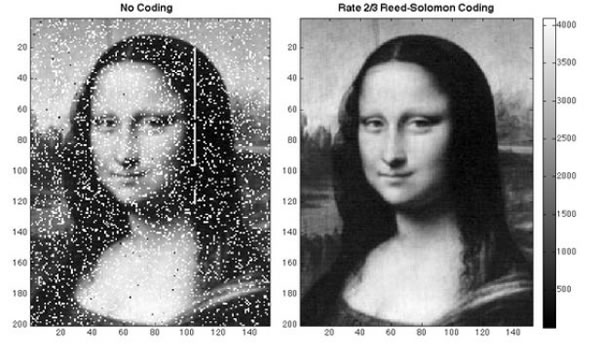
NASA scientists digitized the famous painting and sent it almost 240,000 miles away to the Lunar Reconnaissance Orbiter using laser pulses from NASA's Goddard Space Flight Center in Maryland:
For last March's Mona Lisa maneuver, researchers encoded a black-and-white version of Leonardo da Vinci's enigmatic masterpiece as a series of values in a 152-by-200-pixel grid. Each value represented a shade of black to gray to white, ranging from zero to 4,095. The signal for each pixel was then piggybacked on the ranging station's laser-tracking pulses: Each pulse was fired during one of 4,096 super-short designated time slots, at a rate of about 300 bits per second.300 bits per second? That's a 300 baud modem! Definitely not broadband.
As the pulses were received in lunar orbit, LOLA's software used the precise timing of each pulse to figure out the grayscale value for a given pixel — and reassembled the black-and-white image. The process wasn't perfect: Atmospheric turbulence introduced laser transmission errors, even when the sky was clear. To accommodate the 15 percent error rate, the researchers used Reed-Solomon data coding, which is the same method used to smooth out the bumps in the playback of CDs and DVDs.
Alan Boyle of NBC's Cosmic Log blog explains: Here. | SPACE.com has the video clip explaining how they did it: Here.

No comments:
Post a Comment